- The Arrow
- Posts
- The Arrow #238
The Arrow #238
Greetings, everyone.
I had a great weekend watching The Open, which was played at Royal Portrush in Northern Ireland, a course I’ve been fortunate enough to play twice. It is a grand place, but like everywhere in Ireland (both Northern and the Republic of) the weather can turn on a dime. The first time I played, MD walked the course with me. It was overcast when we got there and remained overcast throughout the afternoon, with one exception, which was a total cloudburst. I’ve never seen anything like it before or since.
We were on hole number 16 and had had our photo taken not long before.

Out of nowhere a huge cloudburst hit us. I now know where the name comes from—it’s truly like a cloud burst open. No little sprinkling before hand, just a ton of water all at once. MD was carrying the scorecard, which you can see from above is in perfect shape. When the cloudburst hit, it douched the scorecard so quickly that she had no time to stick in anywhere, and it was almost instantly soggy and illegible. Neither one of us had ever seen anything like it. And, believe me, it can rain hard and fast in Arkansas, but nothing like Ireland.
By the time we got to the green on #16, which is brutal, BTW, the rain had stopped and the sky looked just like the sky in the photo above. We, however, were a little worse for wear in that we didn’t have any time to get our rainwear on. We finished #16, #17, and #18 under a dry sky, but we were far from dry ourselves. We went into the clubhouse and had ourselves a wee dram.
The last time I played Portrush was just a couple of years ago, and there was not a drop of rain, though it was overcast all afternoon.
Anyway, I loved watching The Open to see how the pros played all the holes I butchered.
The only thing that marred the television presentation was the advertisements. Not the normal ones you’re used to—I just fast forward through those. Now they’ve started putting ads on the right half of the screen while actual golf is being shown on the left half. It’s distracting as hell, or at least it was until I figured out that if you turn the sound off, it isn’t so bad. The network turns the sound off on the golf side and blares the commercial from the right. If you turn the sound off all the way, then you can watch the golf in a sort of semi-peace.
Searching Archives
A poll respondent asked:
How do we access the archives? I'd like to look back on your comments on high levels of vitamin D and on GERD.
Arrows #1 through #96 (which were originally titled No Name Newsletter) are locked away in my computer. I used a different platform at the time, and when I switched to Substack, said platform wouldn’t let me house my newsletters on their platform any longer without paying a fortune, so I had to find another place. Which I did, but they are unavailable until I figure out a way to make them available. These are the newsletters from the first one through The Arrow #97, which was the first one on Substack.
I wrote on Substack for a year or so, then decided to change to the platform I’m using now. My current platform picked up all the Substack versions, so you can find them along with all the newsletters in the new platform by going to the archives.
Enter arrow.proteinpower.com into your browser window. You will immediately get the window below:
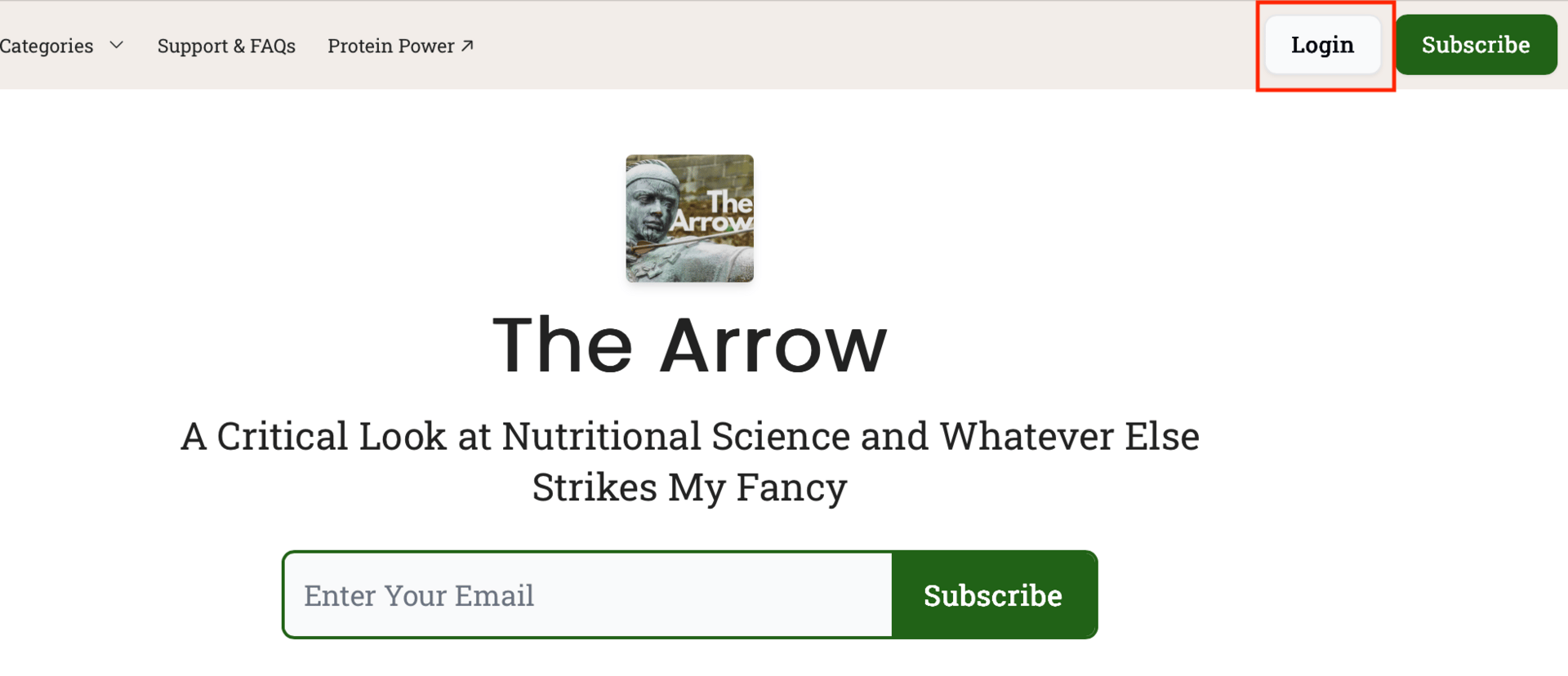
Assuming you are a subscriber, click on the login button in the upper right. You will then be taken to this window. Enter your email you use to subscribe to The Arrow.
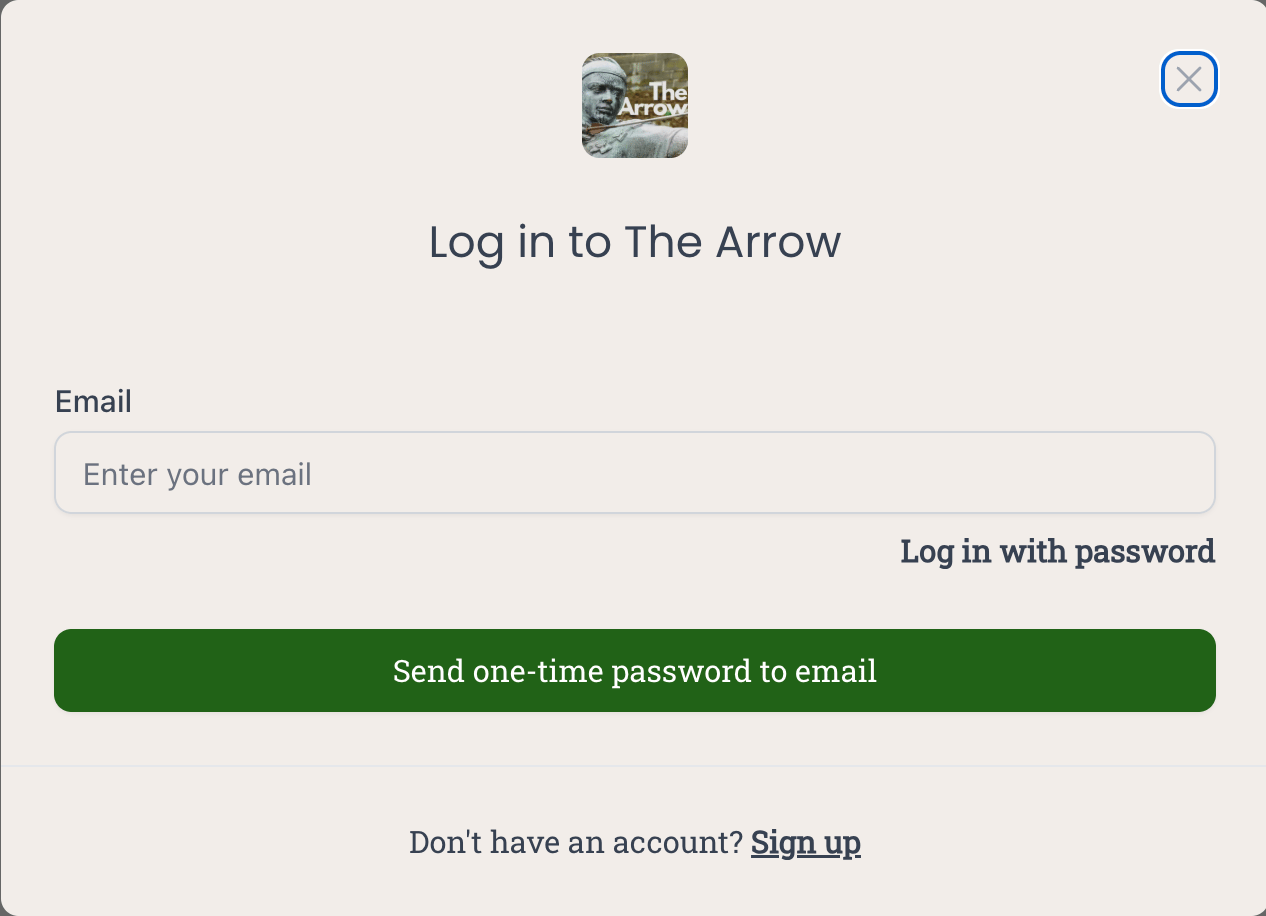
You will receive a one-time-use 6-digit code via email. Take the code from your email and insert it in the screen shown below and you should be in business.
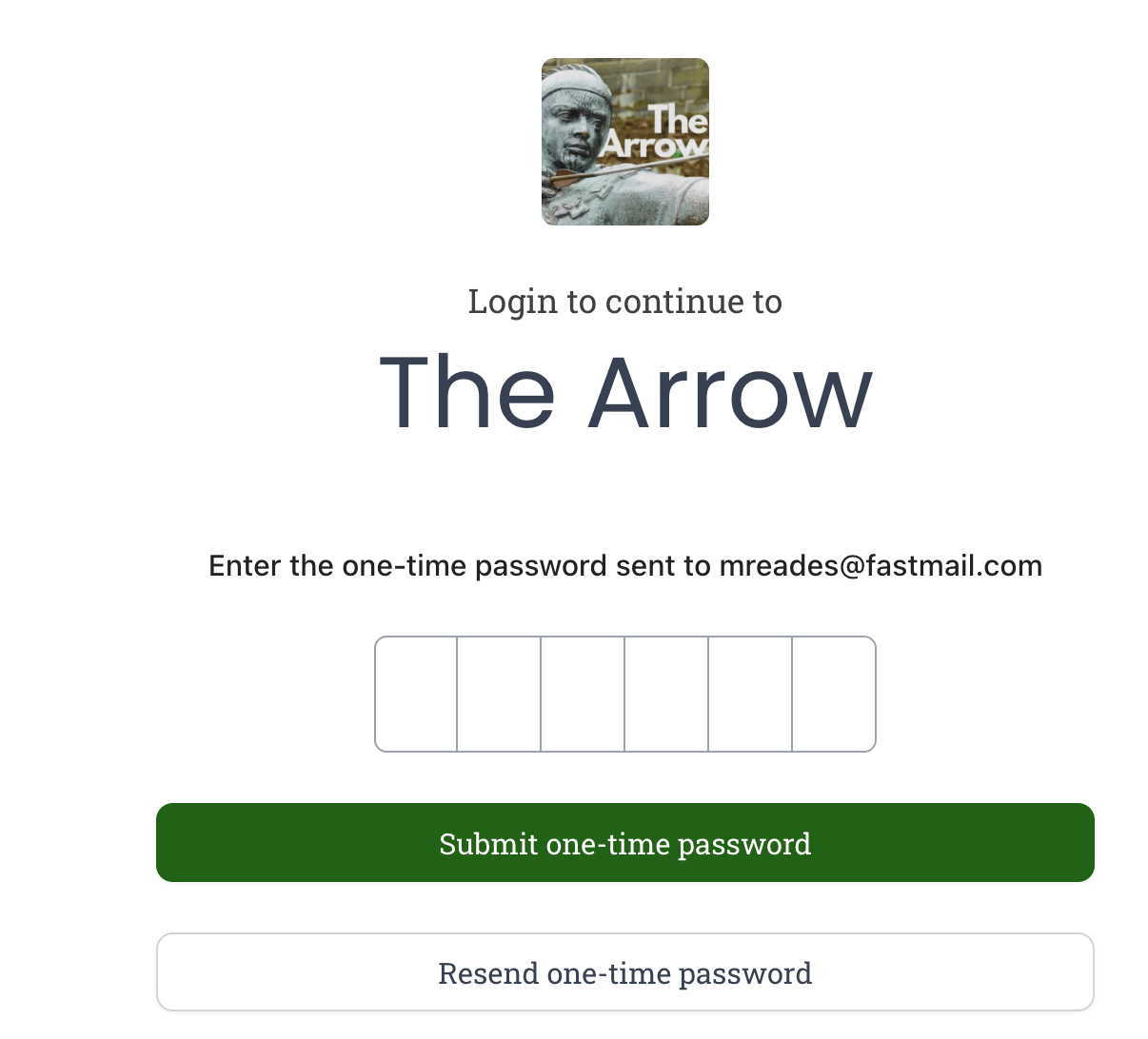
You should then have access to all the Arrows from 97 to the most current laid our before you. Whether you can get back in a second time, I don’t know. You’ll have to try it and see.
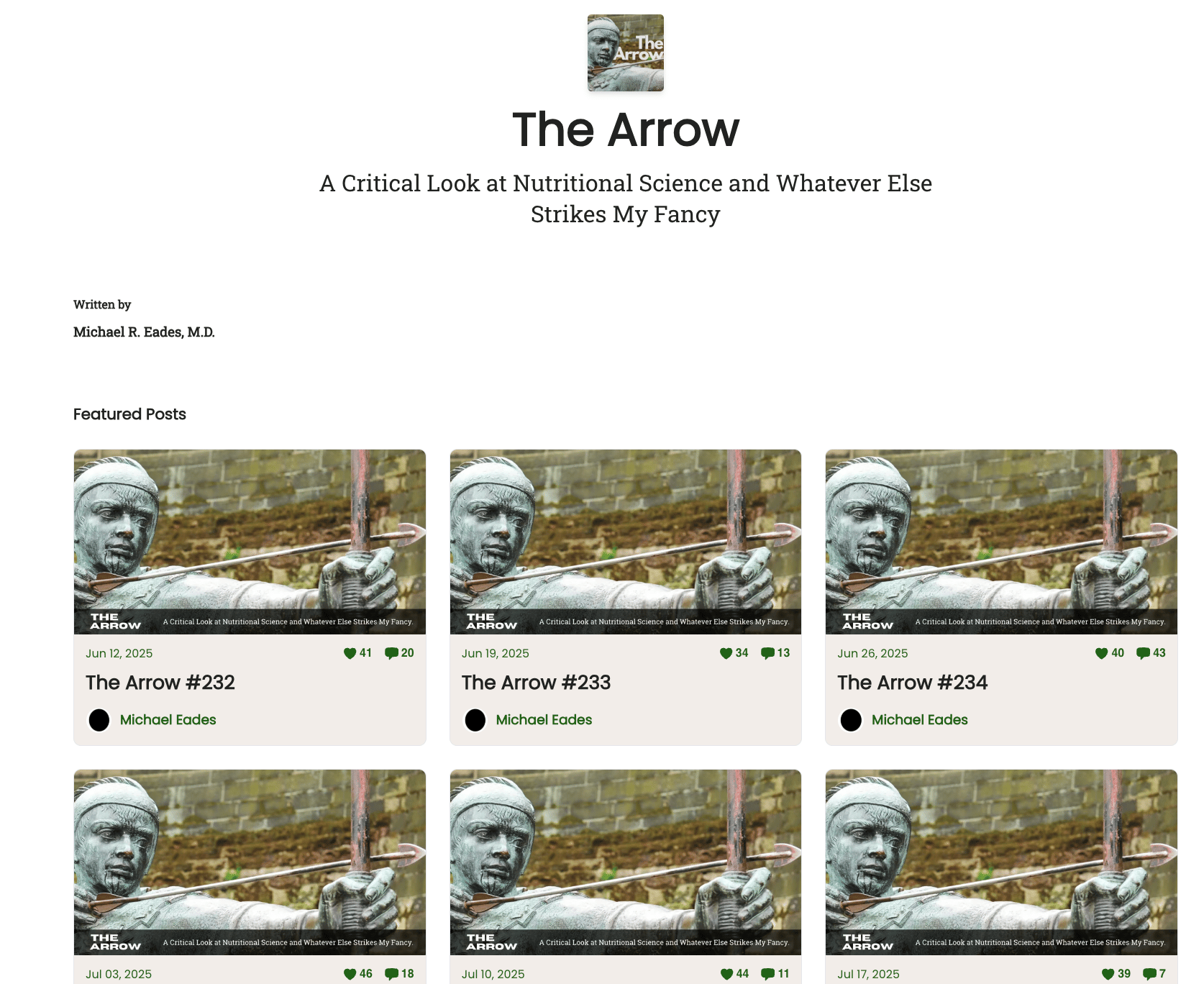
I will continue to work on the earlier ones prior to #97.
The Arrow is a reader-supported publication. To receive new posts and support my work, please consider becoming a paid subscriber or a mere $6 per month (or less expensive is you go for the annual deal).
C-15 and C-16
A poll respondent writes:
Educational, entertaining and informative! -- as usual. Question: The benefits of C:15 fats are pretty compelling (the pill version maybe not so much). But butter and cheese --high in C:15-- also are high in C:16 which has all the negatives that made saturated fat such a villain ever since Ancel Keyes. Assuming all butter carries the C:16 baggage, how does that mitigate the downsides of C:16?
The author makes the point the C-15 fats are good for about everything that ails one, but, alas, they are also found cheek-by-jowl with C-16 fats, the dreaded saturated fat palmitic acid. Which is her justification for the supplements: C-15 without the C-16. I don’t think the C-16 are that problematic, so I just take the C-16 along with the C-15 I get in diary products.
Disneyland
A commenter told of his first trip to Disneyland
Speaking of Disneyland, I can still remember my visit there back in '58 when I just 5 yrs. old. My most memorable moment? Getting violently sick after riding on the tea cup.
My first trip to Disneyland was in the late 1960s when my family moved to Southern California. I went once, and next to the Matterhorn ride the Tea Cup was my favorite. It was about the only ride in the park that you got to control. The faster you turned the wheel in the center, the faster it rotated, and the dizzier you got.
I didn’t go back to Disneyland until I was in college. I was looking for a job and went to the job placement office in my college. The guy there told me it was almost impossible to get hired at Disneyland unless you went through a college placement office. Once vetted, I took my form from the placement office and headed off to the Magic Kingdom
Once there, the guy who interviewed me told me he could get me hired as a conductor on the train that runs around the park. He told me it wasn’t part of Disneyland, but was operated—as was the Monorail—by a Disney subsidiary called Retlaw—which is Walter (as in Walt Disney) spelled backwards. I took the gig and it turned out to be the worst job I ever had. Truly. I hated it worse than any job I ever worked, which was weird, because everyone else my age working there seemed to love it.
I lasted about a year. What sprung me out of it was that after my first year, I had to join the Teamsters Union. For being a conductor on a ride at Disneyland! And not only did I have to join the Teamsters, I had to pony up union dues for the privilege. So it was AMF for me. I ended up getting a vastly better job with the US Forest Service.
Here is the only photo in existence of me as a Disneyland employee. My folks came to the park on a day I was working to see me in action. The photo is lousy, because it was a Polaroid to begin with, and then my own efforts to capture it on my iPhone were not the best.

Dr. Mike, Disney train conductor!
Corporate Capture
I just came across an amazing video that is a few months old about the Pfizer measles, mumps, and rubella vaccine. Apparently, it is a part of a three part program, but it’s only the first part I’m interested in. After watching the promo about the guy who is the Pfizer whistleblower, you’ll have to spend a couple of minutes watching promos about the marine who choked the guy on the subway and helicopter pilots flying to oil rigs. Once you’re past those, you’re into the meat of the video. And it is pretty unbelievable.
I have mixed emotions about what the video portrays. On the one hand, I’m pretty happy in that the big issue here is that there is too little live virus in the vaccines. Pfizer loaded them up with plenty of live virus material when they made them, but the viruses died over time, which ended up with not having nearly enough live virus to generate the immune response required to immunize against the measles. Kids got the jabs, yet ended up getting the measles, too.
Pfizer’s solution to the problem was to jack the live virus content to the point that even with viral die-off they would have enough live virus still in the vaccine. Of course, those who got the first doses of the vaccine with maximal viral content ended up having issues.
When the whistleblower in the video complained, he was basically told to shut up. He went up the corporate ladder and ultimately ended up at the FDA. The video is the story of his journey and shows just how hand-in-glove the FDA works with Big Pharma.
This video is just about the amount of live virus in the vaccine, not about the fact that the vaccine had never been tested against a placebo. Seeing how slipshod the whole process is just concerning the viral content is enough to put me off of most drugs that don’t have long safety profiles.
Is the War on Saturated Fat Finally Going to End?
Okay, here is another one of those places that were I still on Substack (which I’m not) I could just throw up an entire post with a click. But since I’m not, I’ll have to do it piecemeal.
I first met Maryanne Demasi, PhD when she came to our house in Santa Barbara to film a segment of a show that was to appear on Catalyst, a popular show she presented that was part of the Australian Broadcasting Corporation. As always with these things, I was a little edgy, because I never knew what the actual motive of the person producing the show really was. Was it going to be a balanced look at the subject, or was it going to be a hit piece? It’s hard to tell in advance, because no one ever comes in and says, Hey, Doc, we’re here to do a hit piece on you.
I wasn’t overly worried, however, because although Australia has a pretty substantial land mass, it doesn’t have the population to match. And if I were to be savaged, probably not many would see it in Australia, and no one would see it in the US.
As it turned out, the two episodes of Catalyst were two of the most watched shows in Australian TV history.
The audience was ecstatic. The doctors were outraged, primarily the statinators. Especially since statin users ditched their statins en masse.
And, God bless her for her grit, it cost Maryanne her job.
Which has not slowed her down. She continues to agitate those who need agitating. This article discusses the show that got her fired and all the positive changes that have happened since. Those who denigrated saturated fat for years are now getting their comeuppance. Or are going around saying, Yeah, I knew all that blather about saturated fat was just BS. Humans have been eating meat and eggs for millennia.
Here is her description of the first show, the one on saturated fat, and what happened to her as a consequence.
The series featured experts like Dr Michael Eades, an early advocate for low-carb, high-fat diets; cardiologist Dr Stephen Sinatra; nutritionist Dr Jonny Bowden; science journalist Gary Taubes; and cardiologist Dr Ernest Curtis.
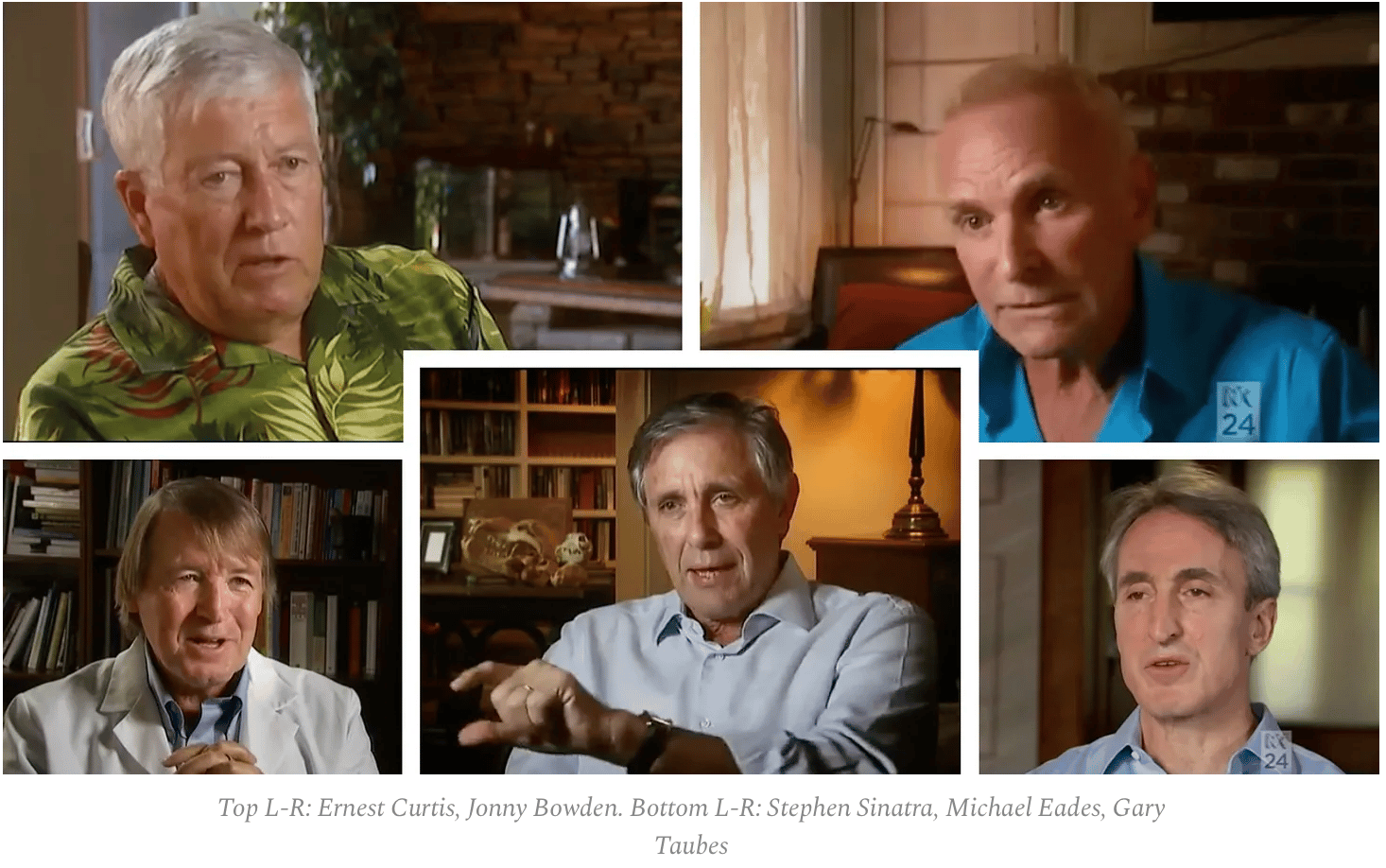
Behind the scenes, I worked closely with pioneers such as Dr Uffe Ravnskov (The Cholesterol Myths) and Dr Malcolm Kendrick (The Great Cholesterol Con), both of whom had been challenging the orthodoxy long before it was safe to do so.
In the program, Eades, for instance, highlighted the absurdity of the prevailing narrative: “You very seldom see the words ‘saturated fat’ in the public press when they’re not associated with artery-clogging. So it’s like it’s all one term – ‘artery clogging saturated fats.’”
Bowden, who co-authored The Great Cholesterol Myth with Sinatra, was just as direct, calling it “a huge misconception that saturated fat and cholesterol are the demons in the diet,” adding, “It is 100% wrong.”
Sinatra traced the origins of the myth, arguing that “saturated fat has been vilified for years because of the cholesterol theory.”
And Taubes, author of Good Calories Bad Calories, known for his meticulous dismantling of diet dogma, cut to the core: “There’s no compelling evidence that saturated fat is involved in heart disease.”
The program also gave voice to the prevailing view, including contributions from Dr Robert Grenfell, Director of the National Heart Foundation, and cardiologist Professor David Sullivan, both of whom vigorously defended the status quo.
Nonetheless, the backlash was immediate, vicious, and unrelenting.
The media turned on me. There were calls for my sacking. The experts who challenged the cholesterol dogma were denounced as “fringe.” And ultimately, the ABC pulled both episodes from its website—despite its own internal review finding no factual inaccuracies.
Much of the outrage came from the medical establishment’s unwavering certainty. Sullivan, who appeared in the program, doubled down in The Conversation:
“It’s not even debatable – saturated fat is bad for you,” he proclaimed. That was the orthodoxy. That was what I was up against. [Link in the original]
Dr. Demasi goes on in her piece about how many of us are chipping away at the idea that saturated fat is not dangerous. But as long as the powers that be hold sway over the dietary guidelines, very little is going to change. But she finally sees the potential for real change coming. I’m hoping it does come, because this may be the only chance we get.
She posted a Q&A from a press conference that Dr. Makary, Commissioner of the Federal Drug Administration addressed. Dr. Demasi put it up in a link. I’m going to post the real thing.
This could have been spoken at any number of low-carb conferences I’ve attended. It’s still difficult for me to believe these words are coming from the mouth of the current head of the FDA. Listen and rejoice!
The Sugar Diet
I’ve only been asked about the latest craze, the Sugar Diet, about a thousand times. To someone who is on a ketogenic diet and who has taken care of thousands of patients on ketogenic and low-carb diets, the sugar diet sounds like a disaster waiting to happen.
When I had been asked about it the umpteenth time, I decided to give it at least cursory glance to see what it was all about. Apparently, it isn’t simply a diet filled with sugar, but a diet that allows a LOT of sugar and keeps protein to a minimum. The sugar doesn’t have to be sugar. It can be fruits, fruit juices, and just about anything sweet.
I took a cruise through the internet and kept coming up with the name Ray Peat in conjunction with the Sugar Diet. I didn’t know Ray Peat personally, but I had read a bit of his stuff in the dim and distant past. I used to see all his small books in circular racks in health food stores, so I came to think of him basically as a pamphleteer.
He was a believer in the Randall Cycle, which I am not and have written about why in numerous issues of the Arrow over the years.
But as I read more on some of his other thoughts, I figured I should give him a deeper look, especially if his ideas were a moving force behind the Sugar Diet. In searching for contemporaneous information on him, I came across a long Twitter (X) article on comparing him to Bryan Johnson, the ultra-wealthy, longevity guru you read about everywhere.
It goes much deeper than I thought it would, and I’ve run out of time trying to run down all the particulars of the Sugar Diet.
I’m gong to sign off here on this now, but I will promise to give it my full attention in the days to come. As soon as I can get a handle on the supposed mechanism of the sugar diet, you will be the first to know. Thanks for your patience.
Odds and Ends
Cut marks on animal bones suggest Neanderthal groups had their own unique culinary traditions. Neanderthals only 45 miles apart had different cooking techniques.
Famed Antikythera shipwreck continues to yield more astonishing discoveries.
Ancient DNA discovers that Ötzi the Iceman and his neighbors had totally different ancestries.
What did the Vikings really think about pregnant women? It’s difficult to find mention of them.
Medicaid fraud: worse than you can imagine.
How one Arkansas farmer pioneered American sake! Straight from the land of my hillbilly roots.
How robo-bunnies might be the solution to invasive Burmese pythons slithering about Florida. The most alluring leporine femme fatale since Jessica Rabbit.
Researchers in Tel Aviv discover plants emit high-pitched sounds when they're distressed that insects can hear.
100,000 miles of coastline in the US to choose from and they picked these 9 beaches? All nice to be sure, but so are lots of others. What were their criteria?
Happy trails to you. Miles and miles of them. All over the good ole US of A.
I wouldn’t put a lot of faith in this, but brain scan study suggests the COVID-19 pandemic caused brains to age roughly five and a half months faster than prepandemic era; effect was seen regardless of infection status, more pronounced in older subjects
The world’s richest woman—an Arkansan no less—opens a new US medical school in Arkansas.
Maybe Michael Jackson was on to something. Research shows walking backward can be good for your body and brain.
Man wins lottery twice in one night. Why is this never me? Oh well, back to work.
Why on earth does a fire truck cost $2 million?This Neanderthal gene might be impairing your athletic performance.
Cancer screening harms more people than it saves.
Did Isaac Newton predict the end of the world in 2060? And if so, should we worry?
Thomas Massie's new bill would let people sue pharma for COVID vaccine injuries. Would be great, but many in congress hate Massie, because he isn’t a team player. And there are so many in congress getting payola from Big Pharma, I doubt he could get the votes.
Video of the Week
The first time I heard this recording, I fell in love with it. I wasn’t married. I had no family. It wouldn’t seem like a song that would fire off all kinds of emotions in a young buck on the prowl, but I loved it. I was too broke to buy records then, but I listened to it every time in came on the radio. I don’t know what it did to ring my chimes, but it sure did it. Still does. Haven’t heard it in years, but YouTube fed it up to me when I was looking for a golf video. Which has got to tell you something.
Bobby Russell wrote it, but everyone and his brother covered it. I found videos of Glen Campbell and Bing Crosby covering it, but I like the Bobby Russell version the best, so that’s what you’ll get. You can look up Bing and Glen, if you’re of a mind.
Time for the poll, so you can grade my performance this week.
How did I do on this week's Arrow? |
That’s about it for this week. Keep in good cheer, and I’ll be back next Thursday.
Please help me out by clicking the Like button, assuming, of course, that you like it.
This newsletter is for informational and educational purposes only. It is not, nor is it intended to be, a substitute for professional medical advice, diagnosis, or treatment and should never be relied upon for specific medical advice.
Thanks for reading all the way to the end. Really, thanks. If you got something out of it, please consider becoming a paid subscriber if you aren’t yet. I would really appreciate it.
Finally, don’t forget to take a look at what our kind sponsors have to offer. Dry Farm Wines, HLTH Code, Precision Health Reports, and Jaquish Biomedical.
And don’t forget my newest affiliate sponsor Lumen. Highly recommended to determine whether you’re burning fat or burning carbs.
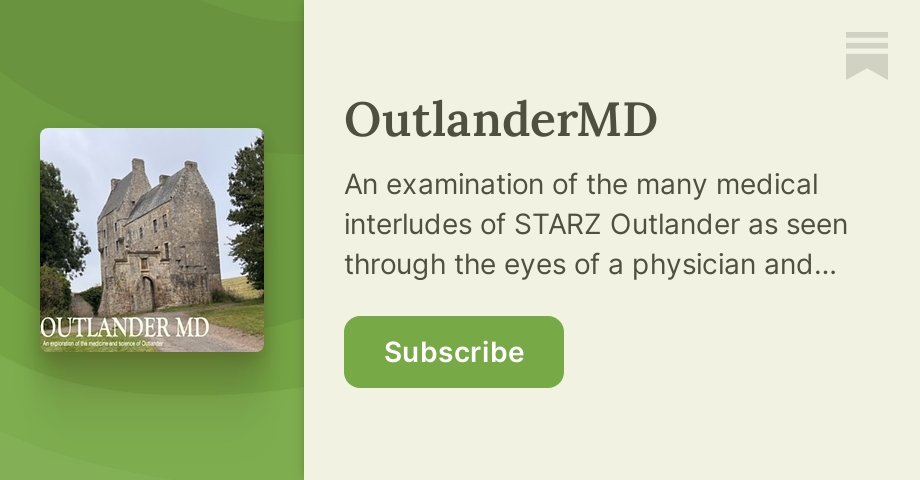
Comments, Poll Responses, and Emails